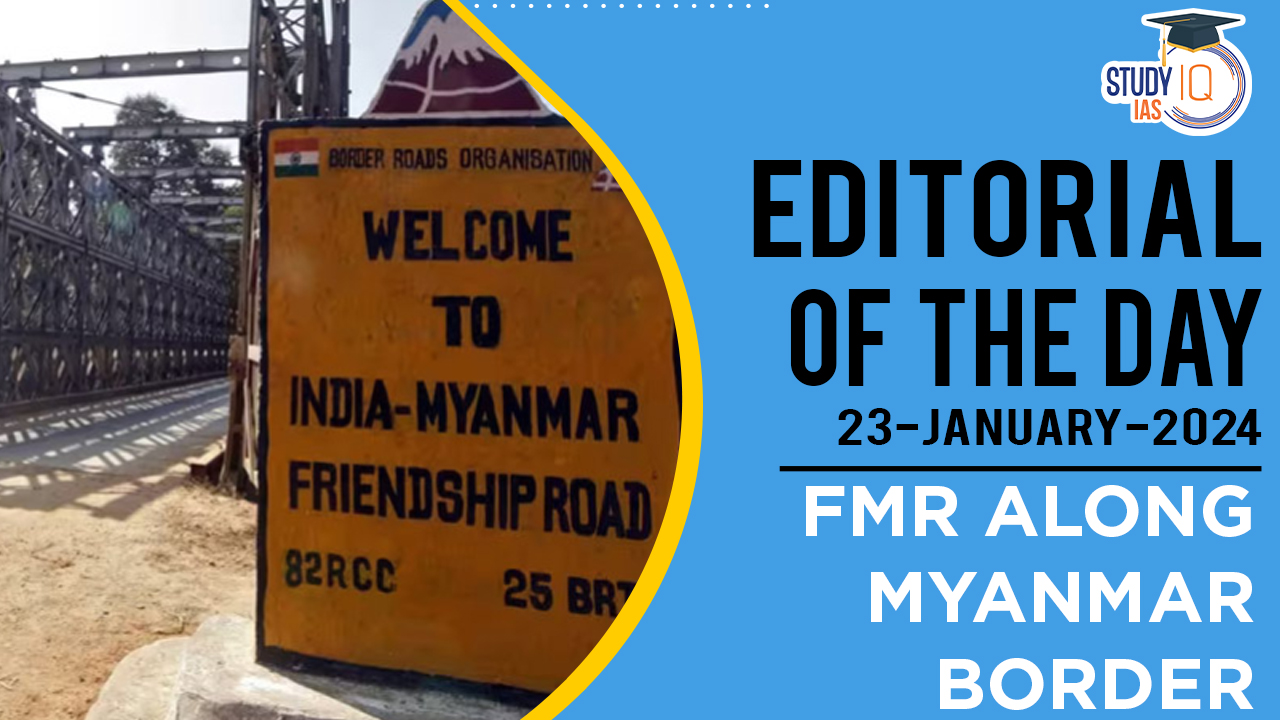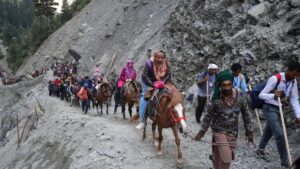Table of Contents
Context: The Home Minister had stated that the India- Myanmar borders will be fenced and the government will reconsider the Free Movement Regime (FMR).
What Is Free Movement Regime (FMR)?
- The FMR, a bilateral agreement between India and Myanmar, all the hill tribes, whether they are citizens of India or Myanmar, can travel within 16 km on either side of the Indo-Myanmar Border (IMB) without needing a visa.
- This regime allows border residents to cross with a border pass, typically valid for one year, and permits stays of up to two weeks for each visit.
- This helps locals to get more culturally assimilated with trans-border villages through weddings, celebrating common festivals together and trans-border trade.
- Enacted in 2018, this regime was part of India’s broader Act East policy initiative.
- In response to the political upheaval in Myanmar post the 2021 coup and the subsequent surge in migrants, India temporarily halted the FMR in September 2022. This led to over 40,000 refugees seeking refuge in Mizoram, with an estimated 4,000 additionally entering Manipur.
We’re now on WhatsApp. Click to Join
Challenges Associated
- Security Risks: The FMR allows for relatively unrestricted movement which can be exploited by insurgents and terrorists to cross the border undetected.
- Illegal Activities: The regime makes it easier for individuals to engage in illegal activities such as smuggling goods and arms across the border.
- Drug Trafficking: The porous border under the FMR is used for drug trafficking, particularly of narcotics such as methamphetamine and heroin.
- Challenges in Monitoring: Due to the free movement, it becomes difficult for border security forces to monitor and differentiate between regular community members and those engaging in illegal activities.
- Insurgent Movement: Insurgent groups, including factions like the NSCN-K, utilize the porous borders facilitated by the FMR for their movement, which poses a threat to national security.
- Lack of Regulation: There is a lack of stringent regulatory frameworks to oversee the movement of people and goods across the border, leading to potential abuse of the FMR.
- Impact on Local Communities: While the FMR is designed to support local community interactions, the associated illegal activities can have adverse impacts on these communities, including the spread of drugs and violence.
- Strain on Law Enforcement: The regime puts additional strain on law enforcement and border patrol resources, which may already be limited in these remote areas.
- Difficulty in Implementing Countermeasures: The nature of the FMR can make it challenging to implement effective countermeasures against the trafficking of drugs and weapons.
- Compromise of Border Integrity: The FMR can potentially compromise the integrity of national borders, making it more challenging to assert sovereign control in these areas.


 Operation Shiva 2025: Indian Army’s Ma...
Operation Shiva 2025: Indian Army’s Ma...
 World Youth Skills Day 2025, Theme, Hist...
World Youth Skills Day 2025, Theme, Hist...
 President Murmu Nominates Four Members t...
President Murmu Nominates Four Members t...





















